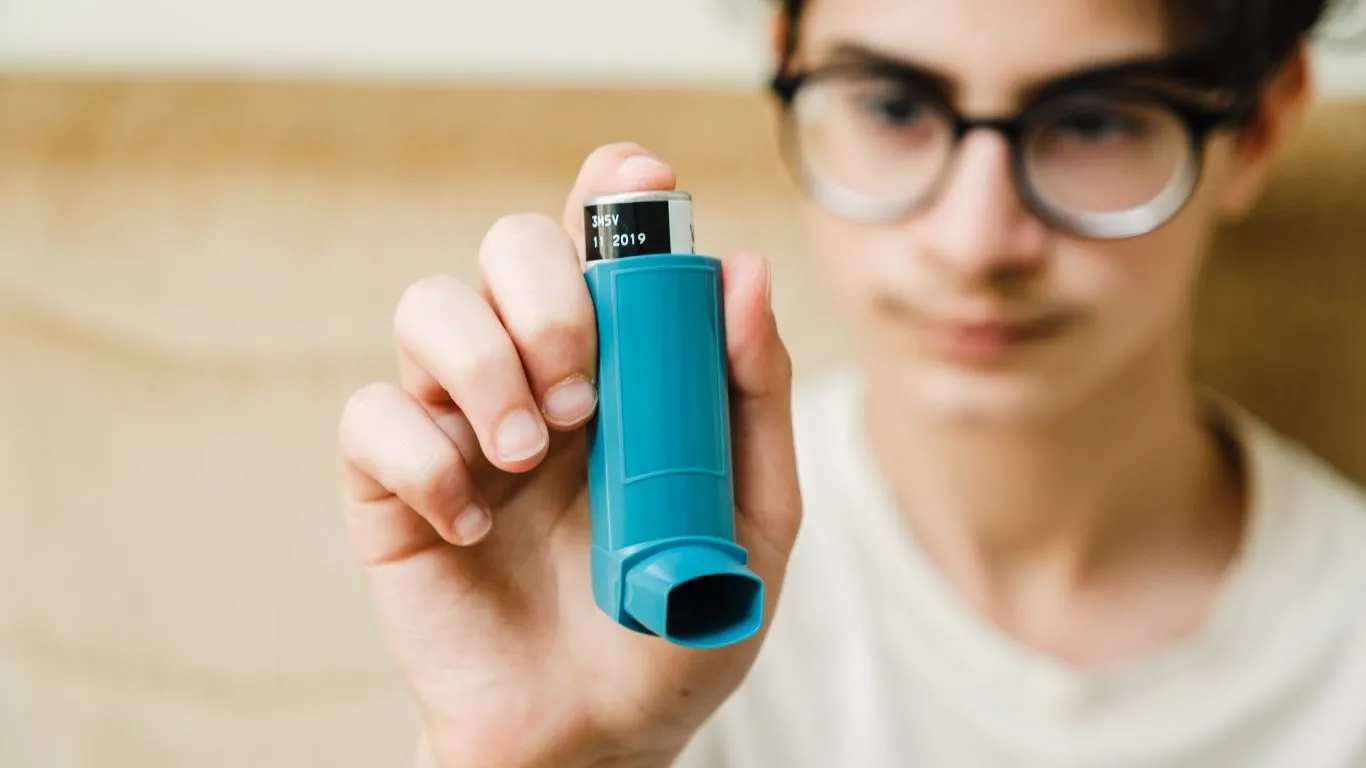Best Warm-Up Exercises for Asthma – A Comprehensive Guide
Wondering how to safely warm up before exercising with asthma? We’ve got you covered with the best warm-up exercises to help you breathe easy and get the most out of your workout!
If you’re someone with asthma, you might be wary about the idea of exercising, especially when it comes to warming up. After all, the risk of triggering symptoms can feel a bit daunting. However, a proper warm-up is not only safe—it’s essential to get your body ready for the physical activity ahead, while also preventing asthma flare-ups. The key is to warm up gradually, allowing your body and lungs to adjust before jumping into more intense movements.
In this article, we’re diving into the best warm-up exercises specifically designed for people with asthma. Whether you’re a seasoned gym-goer or just starting to incorporate fitness into your routine, these exercises can help you breathe better and exercise with confidence.

Why Warm-Up Exercises Are Crucial for People with Asthma
When you have asthma, your airways are more sensitive to changes in temperature and exertion. A sudden spike in activity, especially in colder weather, can trigger wheezing, shortness of breath, or coughing. This is why a gentle and controlled warm-up is especially important. A good warm-up increases blood flow to your muscles, loosens your joints, and, crucially, allows your airways to open up gradually, helping you avoid an asthma attack during exercise.
How to Warm Up with Asthma
The key to warming up with asthma is to keep it low-impact, steady, and slow. This gives your respiratory system a chance to adjust and prevents sudden strain. The following warm-up exercises are asthma-friendly and help your body prepare for more intense physical activity without triggering symptoms.
1. Breathing Exercises
Start your warm-up with some simple breathing exercises. These are excellent for opening up your airways and calming your nervous system before exercise.
How to do it:
Sit or stand in a comfortable position with your shoulders relaxed. Inhale slowly through your nose for about 4 seconds, expanding your diaphragm (your belly should rise). Hold your breath for 2-3 seconds. Exhale slowly through your mouth for 6-8 seconds. Repeat for 5-10 breaths, focusing on deep, controlled breaths.
Why it’s great for asthma:
Breathing exercises, especially diaphragmatic (or belly) breathing, help you relax, improve oxygen flow, and prepare your lungs for physical activity. This helps to prevent a flare-up by teaching your body to regulate your breathing.
2. Gentle Walking or Marching in Place
Walking is an excellent low-impact exercise to get your heart rate up without triggering asthma symptoms. Start with a slow pace to allow your body and lungs to gradually adapt to movement.
How to do it:
Start by walking slowly for 3-5 minutes at a pace that feels comfortable. Focus on steady breathing. If you’re indoors, you can march in place, raising your knees alternately.

Why it’s great for asthma:
Walking helps improve circulation and gets your body moving without putting too much strain on your lungs. It’s a gentle way to raise your heart rate while avoiding sudden exertion.
3. Dynamic Stretching
Dynamic stretching involves moving your muscles through their full range of motion in a controlled way. This is much safer than static stretching, especially if you have asthma, because it warms up your muscles and joints without causing abrupt changes in breathing.
How to do it:
Leg Swings: Stand next to a wall or a stable surface for support. Swing one leg forward and backward in a controlled motion for 10-15 swings. Repeat on the other leg.
Arm Circles: Stand with your feet shoulder-width apart. Extend your arms out to the sides and make small, controlled circles. Gradually make the circles larger, and continue for 15-20 seconds.
Torso Twists: Stand with your feet hip-width apart and gently twist your torso from side to side. Keep your movements smooth and controlled, focusing on warming up your core.

Why it’s great for asthma:
Dynamic stretching prepares your muscles and joints for movement while promoting steady, controlled breathing. These exercises also help avoid the risk of injury and improve flexibility.
4. Yoga-Inspired Movements
Yoga is another great warm-up exercise for people with asthma because it combines controlled breathing with gentle stretching. Certain yoga poses, like the Cat-Cow stretch and Child’s Pose, are particularly beneficial.
How to do it:
Cat-Cow Stretch: Start on all fours with your hands under your shoulders and knees under your hips. Inhale and arch your back (this is the “Cow” part). Exhale and round your spine upward (this is the “Cat” part). Repeat for 5-10 rounds.
Child’s Pose: From the Cat-Cow position, lower your hips back toward your heels and stretch your arms forward, forehead resting on the floor. Hold for 15-30 seconds.

Why it’s great for asthma:
Yoga-inspired exercises focus on deep, mindful breathing while gently stretching and relaxing the body. The combination of physical movement and slow, controlled breathing is perfect for preparing your lungs and muscles for exercise.
5. Light Jogging (If Appropriate)
If you feel comfortable, you can gradually build up to a light jog. Keep the intensity low and stay mindful of your breathing.
How to do it:
Start with a slow pace and jog lightly for 1-2 minutes. Gradually increase your pace if you feel comfortable, but always keep it light. Focus on slow, deep breathing as you jog.
Why it’s great for asthma:
A slow, light jog can help increase lung capacity and endurance over time, which is important for people with asthma. Just be sure to keep the intensity at a level that feels manageable.
Important Tips for Warming Up with Asthma
- Start Slow: Never rush into a warm-up. Begin with light activities to gently elevate your heart rate and breathing.
- Monitor Your Breathing: Pay close attention to how you’re breathing during your warm-up. If you feel short of breath or wheezy, stop and use your inhaler if necessary.
- Use Your Inhaler: If your doctor has prescribed a pre-exercise inhaler, be sure to use it before you start warming up.
- Stay Hydrated: Drink water throughout your warm-up to keep your body hydrated, which can help maintain normal lung function.
Conclusion
Exercising with asthma doesn’t have to be a struggle. By incorporating the right warm-up exercises, you can prevent flare-ups and ensure your body is ready for more intense activity. Start slow, listen to your body, and focus on gentle movements that help improve your breathing. The more consistently you incorporate these exercises into your routine, the better you’ll feel in the long run.
Appendices
References
- American Lung Association (2024). Asthma and Exercise: How to Get Active with Asthma.
- National Asthma Education and Prevention Program (NAEPP) (2023). Guidelines for the Diagnosis and Management of Asthma.
- Asthma UK (2024). Exercise and Asthma: Safe Tips for Exercising with Asthma.
FAQs
- Can I exercise with asthma? Yes, exercising with asthma is totally possible! With the right warm-up and proper management, you can safely engage in physical activity. Just be sure to start slow and use your inhaler as directed by your doctor.
- What are the best warm-up exercises for asthma? Gentle walking, breathing exercises, dynamic stretches, and yoga-inspired movements are all excellent warm-up choices for people with asthma. These exercises allow you to gradually increase your heart rate and open up your airways.
- How do I know if my warm-up is working? You should feel your breathing gradually become deeper and more controlled. If you start feeling wheezy or short of breath, slow down and take a break. Use your inhaler if needed.
- What should I avoid when warming up with asthma? Avoid sudden, intense movements, and always listen to your body. Don’t push yourself too hard during the warm-up, and if you start feeling unwell, stop and take a break.
Disclaimer
The information provided in this article is for educational purposes only and should not be considered medical advice. Please consult with a healthcare provider before starting any new exercise regimen, especially if you have asthma or any other health conditions.

Bianca Nala is a compassionate Nurse Practitioner with a strong background in primary and respiratory care. As a health writer for Healthusias.com, she combines her clinical expertise with a talent for clear, relatable storytelling to help readers better understand their health. Bianca focuses on topics like asthma, COPD, chronic cough, and overall lung health, aiming to simplify complex medical topics without losing accuracy. Whether she’s treating patients or writing articles, Bianca is driven by a single goal: making quality healthcare knowledge accessible to everyone.






